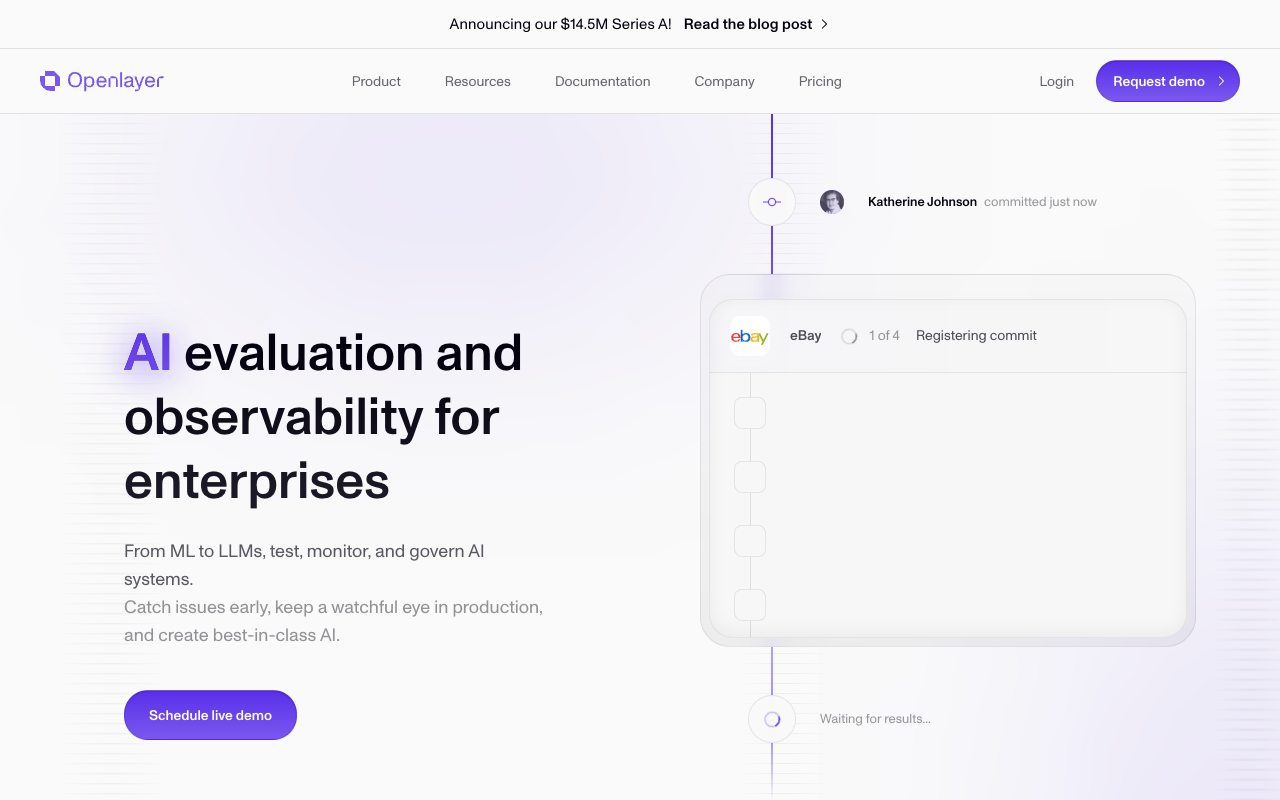Openlayer - Testing and Observability for LLM Applications

Openlayer is a comprehensive platform that offers testing, evaluation, and observability tools specifically designed for LLM (Language Model) applications and machine learning products. With Openlayer, developers and data scientists can ensure the quality and performance of their LLM models, track their progress, and iterate on them seamlessly.
One of the key features of Openlayer is its powerful testing capability. It provides a suite of data quality, drift, and performance tests that run on each version of your model and data. This allows you to have a clear understanding of the performance of your LLM application and identify any issues or anomalies that may arise. With continuous testing, you can make informed decisions and continuously improve your models.
Observability is another crucial aspect of Openlayer. It allows you to closely monitor your models in production and receive real-time alerts wherever you prefer, whether it’s through email, Slack, or within the Openlayer app. This ensures that you can stay informed about the performance of your LLM application and take prompt action when necessary.
Openlayer also offers versioning tools that enable you to track and compare different versions of your models, datasets, and prompts. With a commit-style versioning system, you can effortlessly keep track of every change and iterate on your models just like you would with code. This streamlined approach to versioning helps you maintain organization and transparency in your development process.
In addition to its testing and observability capabilities, Openlayer emphasizes security. It provides a SOC 2 Type 2 compliant platform and an on-premise hosting option, allowing you to secure your data and ensure that it never leaves your infrastructure.
Join the Openlayer community and take advantage of their hands-on support to help you enhance your LLM applications and ship incredible products. Visit their website to learn more about Openlayer and get started with their testing, evaluation, and observability tools.
You can learn more about Openlayer and its features at Openlayer .